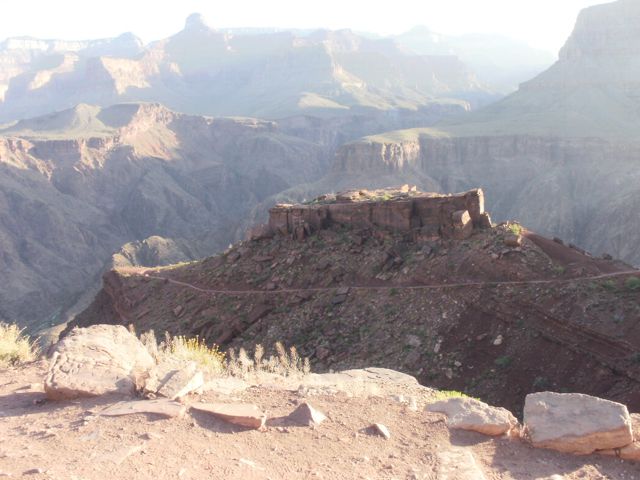Hello hikers! In preparation for the incredible amount of miles we will cover in the Grand Canyon, there are a few key concepts I’d like to instill upon everyone. It’s important to realize that the more you train for this trek, the more you will enjoy your experience in the Grand Canyon. It’s hard to imagine not being overwhelmed with beauty while hiking through such a magnificent wonder, but things can change very quickly if you find yourself ill prepared for the journey. As such, I’ll outline a few helpful suggestions that will put your current training regimen on point with what we’ll be dealing  with in the canyon.
Cardiovascular/Muscular Endurance: According to our Canyon Guru, Jean, we will be hiking between 8 – 14 hours. No one needs to actually be “training” for that long in the gym. However, in our busy lives, it’s important to get in as much “everyday” training as we can. This means walking to the office, parking further away from your building, or taking stairs instead of the elevator in addition to your regular training routine, which shouldn’t be less than 1 hour and include both cardiovascular and strength training. Exercises to be done in the gym can include: going up and down stairs, incline treadmill (at no less than a 10% incline), step ups, walking lunges, full squats, knee extension, hamstring curls, and calf raises. Since we want to keep conditions as real as possible, I recommend exercising in the shoes you’ll be hiking in, as well as carrying your pack with whatever gear you’ll be carrying. If you don’t have a gym available to you, most of these exercises can be done anywhere.
Interval Training: If time is an issue in your schedule and you’re looking for something a bit more efficient, you’ll want to try Interval Training. The idea is to all out sprint for 20 seconds and walk for 10 seconds, repeating this process until you’re toasted. It sounds simple, but this type of training is very intense and taxing on the body’s energy systems and it forces your cardiovascular system to become very efficient very quickly. The idea can also be translated into other modes of exercise such as biking, stair climbing, walking at an incline, and using the elliptical. Whatever your mode is, make sure your 20 second intervals are absolutely all out. An example of Interval Training indoors using a stationary bike: Pedal as fast as you can with as much resistance as you can for 20 seconds, and then remove the resistance for 10 seconds, allowing “the burn” to be flushed out of your quads…and repeat! Allow for a proper warm-up and cool-down when using Interval Training.
Core Exercises: Keeping your core strong and posture correct will also make the trek easier. I recommend sets of planks for up to 2 minutes, butt bridges, and wall sits. These should be incorporated into your routine a few times per week.
The Downhill Portion: It may be surprising to know that the downhill portion of the hike will tax your muscular more than the ascent. Without getting into too much physiology, I will say that muscular contractions required for downhill movement cause actual, physical damage to our legs. Don’t worry! This is how we get stronger and build muscle in the first place, but it’s important that we prepare our bodies for the amount of downhill work we will be doing. I highly recommend running or walking down hills if they are available to you. If not, I share your pain as there aren’t too many hilly areas in the city of Chicago. If you can’t find a good hill, find a tall building and use the staircase for your up and downhill climbs. These will be more than sufficient for your training!
Final Words From Your Trainer: If there is one piece of advice I always tell my clients, it’s this: Goals are reached not by bouts of infrequent events , but by consistent activity amounting to a lifestyle change. You should be training at least 4 days per week and for no less than an hour. Your body will only adapt and progress if you are consistently pushing it to it’s limits and that’s what your training should do. Challenge yourself each and everyday and you will properly prepare yourself for the Grand Canyon. I look forward to seeing all of you at the rim!
*If you have any questions or would like more instruction with the exercises, don’t hesitate to email me at ampfit@gmail.com or leave a comment on the blog!
